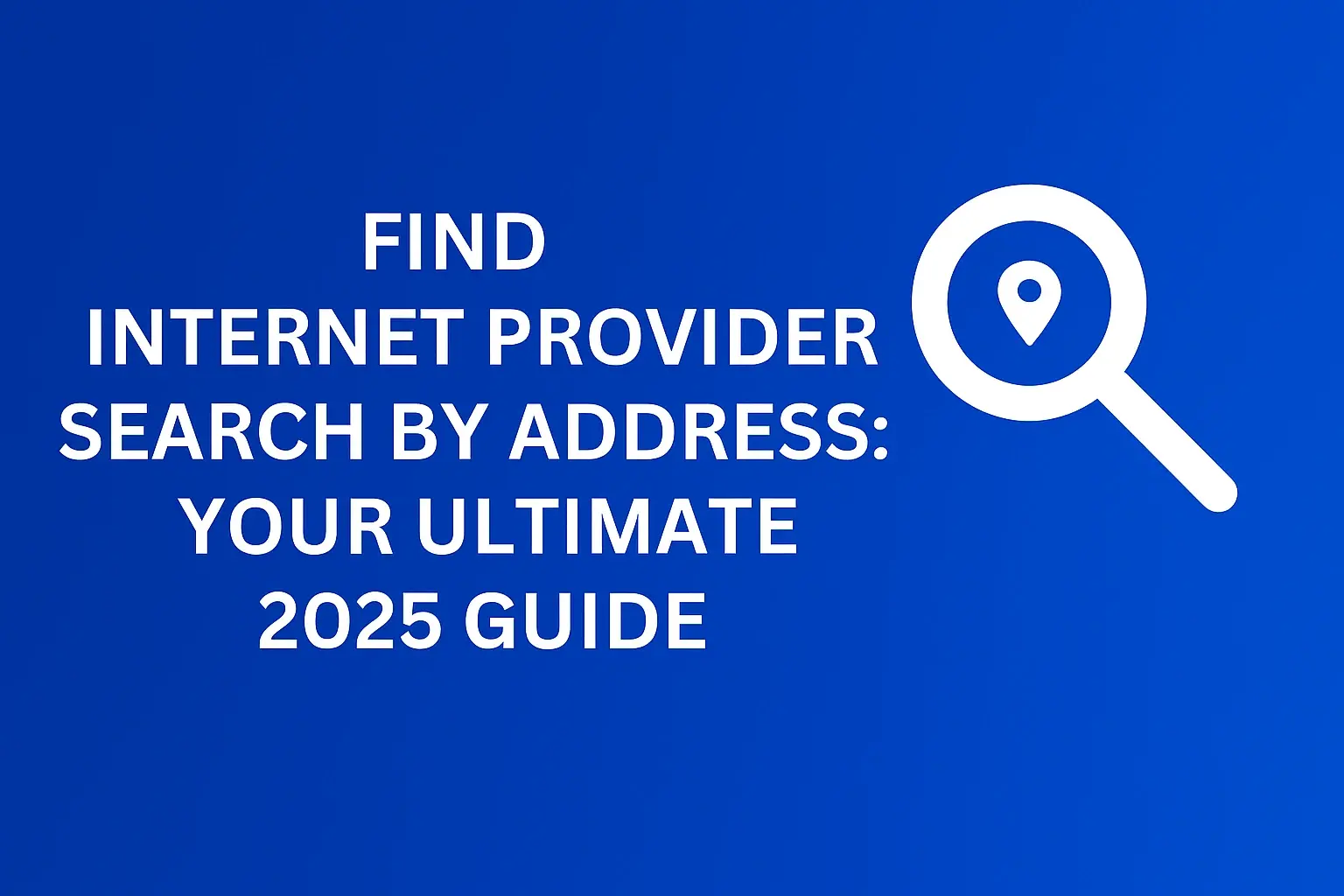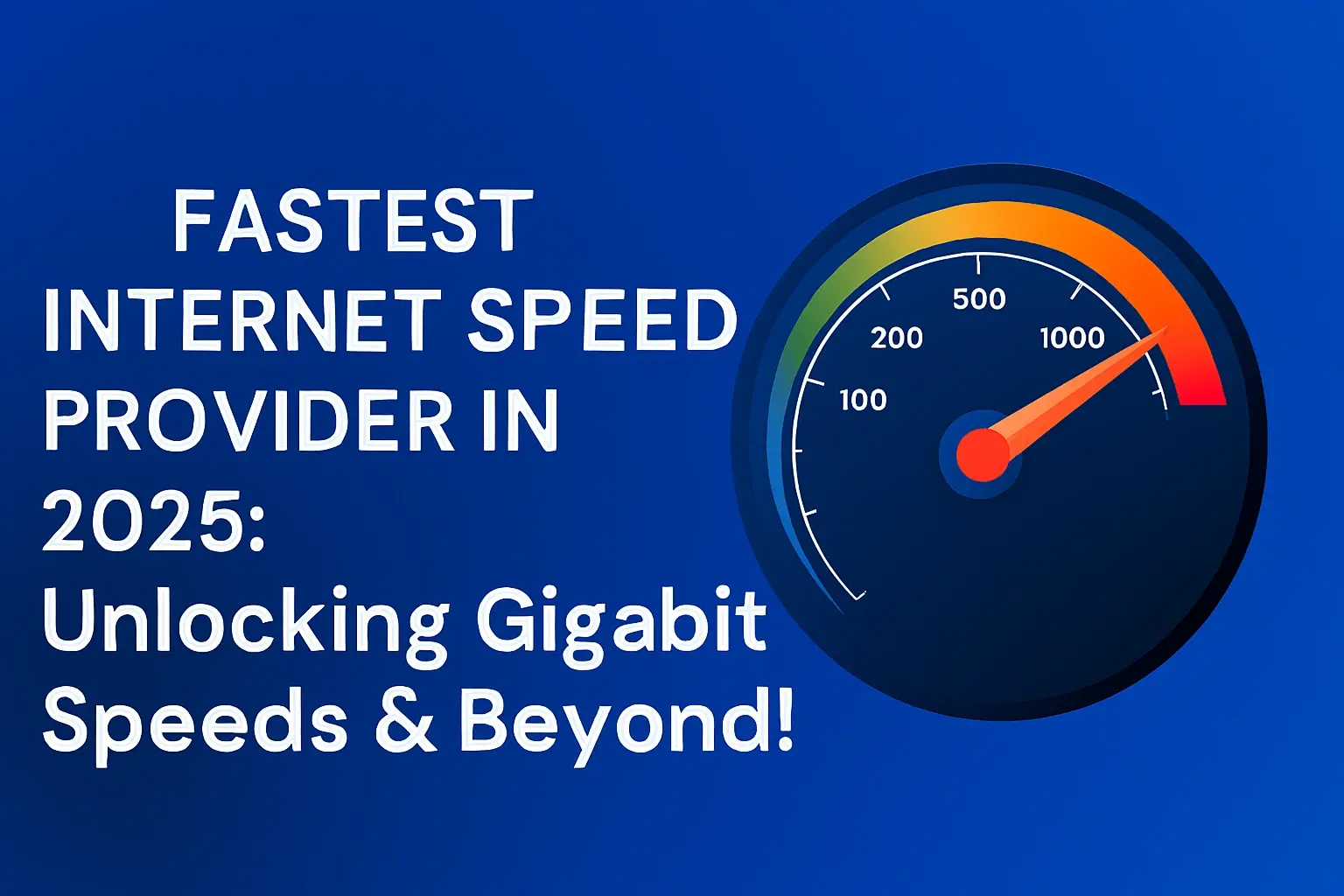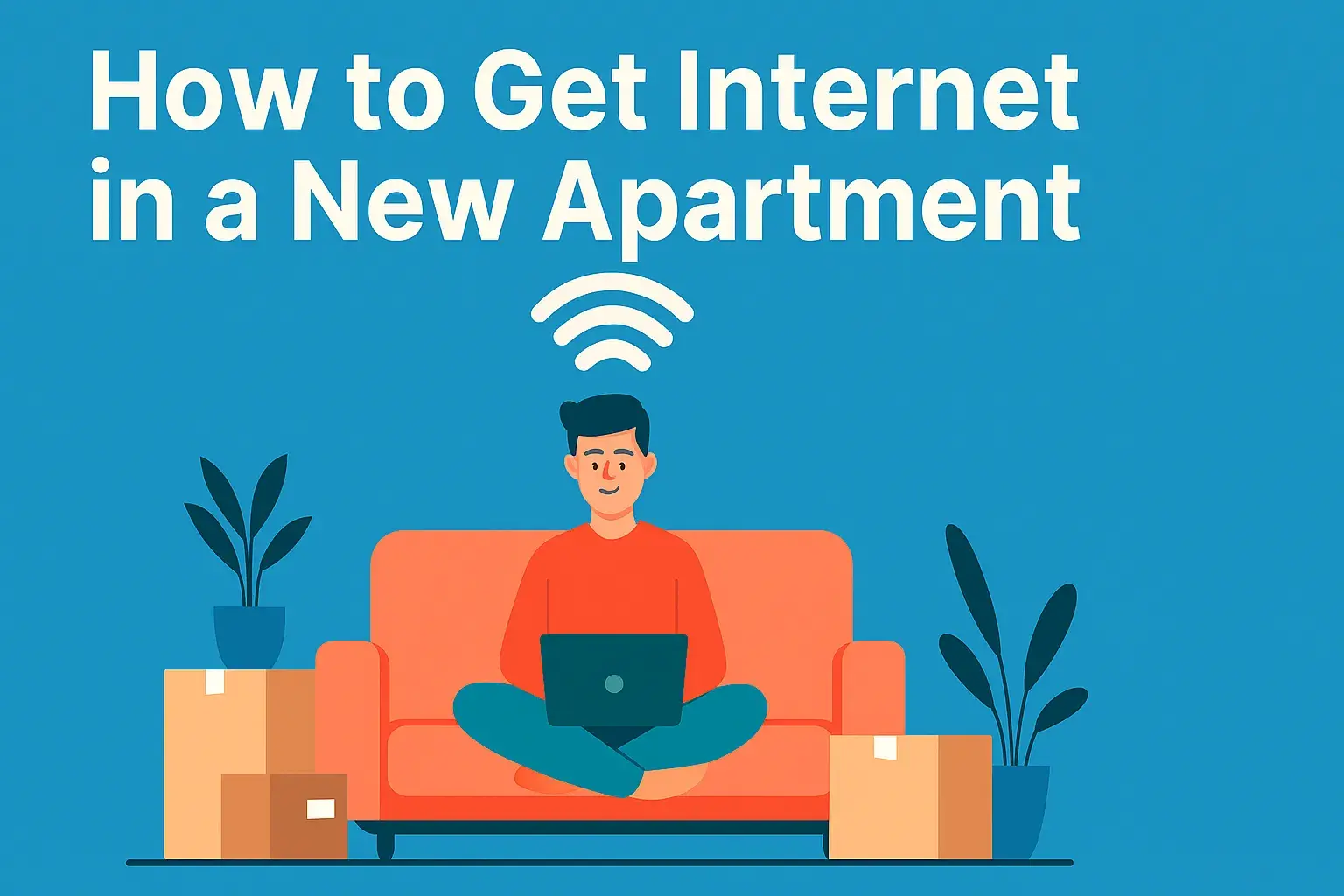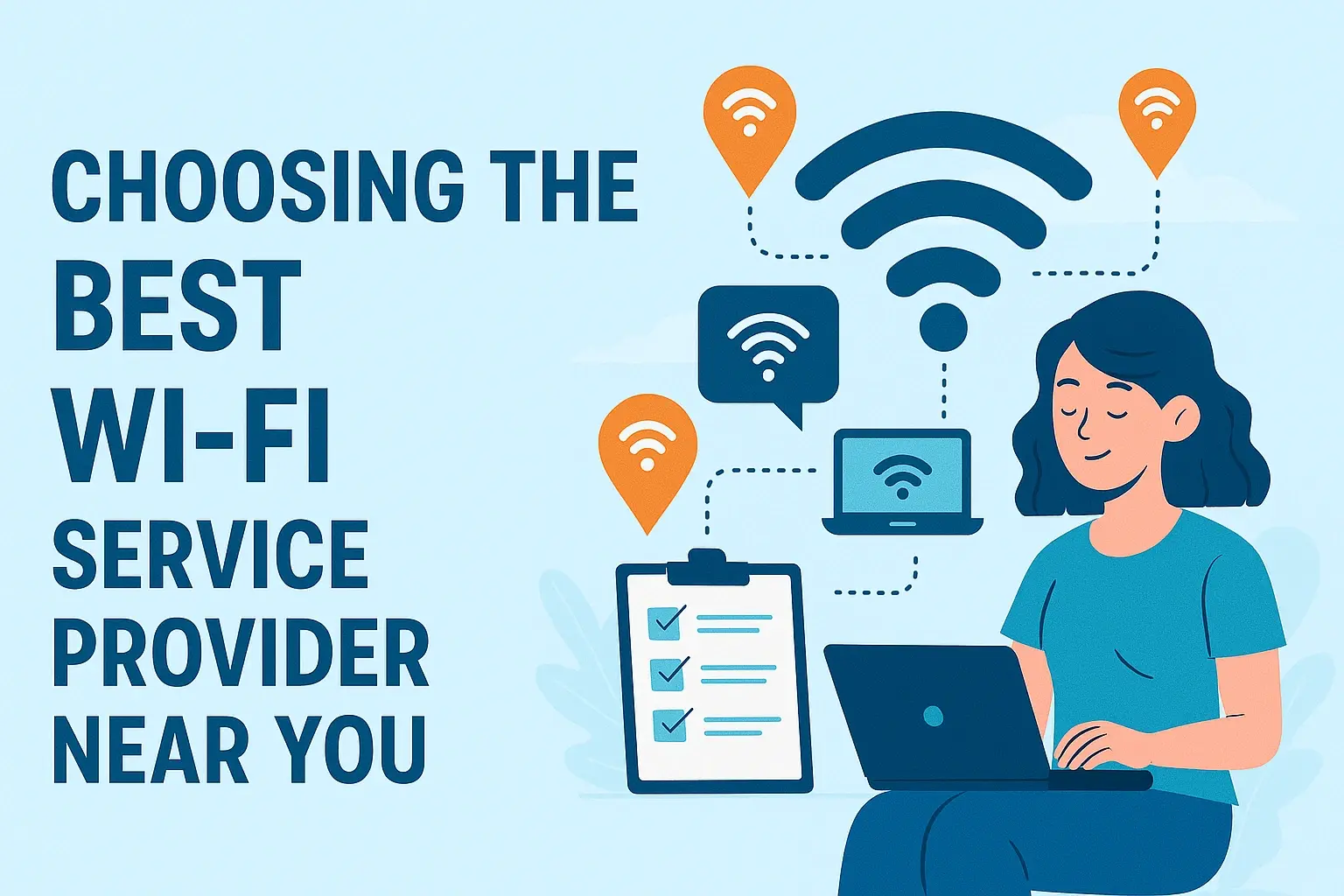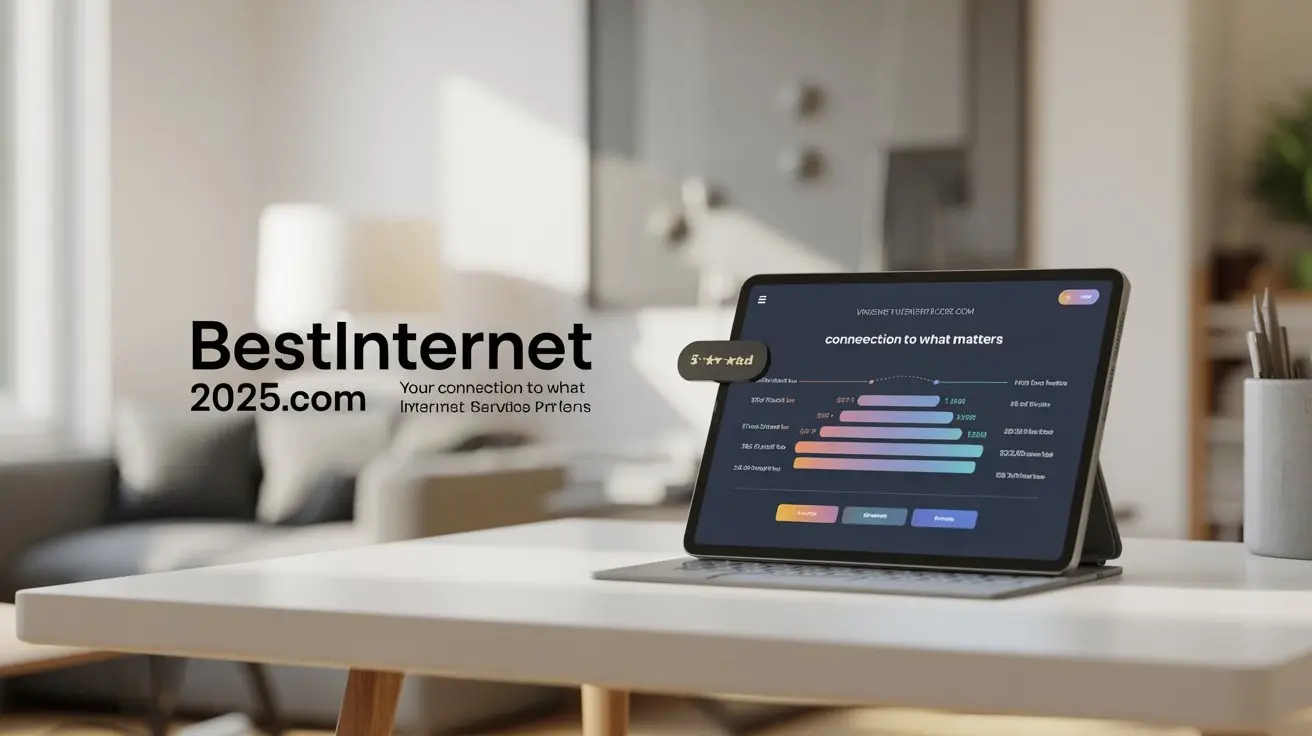Stay Connected with Affordable Business Internet Services

In today's fast-paced business environment, reliable and affordable internet is no longer a luxury but a fundamental necessity. This guide will help you navigate the landscape of business internet services, ensuring you stay connected without breaking the bank, a crucial element for any growing enterprise in 2025.
Understanding Your Business Internet Needs
Before diving into the myriad of options available for affordable business internet services, it's paramount to conduct a thorough assessment of your organization's specific requirements. This foundational step ensures you select a plan that not only fits your budget but also adequately supports your daily operations and future growth. In 2025, the digital backbone of any business is its internet connection, and a mismatch can lead to significant productivity losses and increased operational costs.
Assessing Bandwidth Requirements
Bandwidth is the capacity of your internet connection to transmit data. The amount of bandwidth your business needs is directly proportional to the number of users, the types of applications you run, and the volume of data you transfer. For instance, a small retail shop with minimal online activity will have vastly different bandwidth needs compared to a tech startup that relies heavily on cloud-based software, video conferencing, and large file transfers.
Calculating User Needs
A simple starting point is to estimate the number of devices that will be simultaneously connected to the internet. Each device, whether it's a laptop, smartphone, tablet, or IoT device, consumes bandwidth. Consider peak usage times – when is your office most active? Adding up the estimated bandwidth needs for each user and device provides a baseline. For example, if you have 20 employees, and each is estimated to need 25 Mbps for typical office tasks (email, web browsing, occasional video calls), you'd need at least 500 Mbps of download capacity. However, this is a simplified calculation; actual needs can be higher due to concurrent activities.
Evaluating Application Demands
Different applications have different bandwidth demands. Basic web browsing and email are relatively light. However, real-time applications like video conferencing (e.g., Zoom, Microsoft Teams), Voice over IP (VoIP) phone systems, and cloud-based productivity suites (e.g., Google Workspace, Microsoft 365) require more substantial and stable bandwidth. Streaming high-definition video for training or marketing purposes also consumes significant data. Businesses that rely on large file uploads and downloads, such as graphic design firms or architectural studios, will need robust upload speeds, which are often overlooked.
Considering Upload vs. Download Speeds
Most internet plans are advertised with download speeds, which are crucial for receiving data (e.g., browsing websites, downloading files). However, for many modern businesses, upload speeds are equally, if not more, important. Activities like sending large email attachments, participating in video conferences, backing up data to the cloud, and hosting web services all depend on upload bandwidth. Asymmetric Digital Subscriber Line (ADSL) connections often have significantly lower upload speeds than download speeds. Fiber optic and cable internet typically offer more balanced speeds. In 2025, a business should aim for an upload speed that is at least 20-30% of its download speed, especially if cloud collaboration is a daily activity.
Determining Reliability and Uptime Needs
Beyond speed, the reliability and uptime of your internet connection are critical. Downtime can result in lost revenue, decreased customer satisfaction, and damaged reputation. Businesses operating in critical sectors, such as finance, healthcare, or e-commerce, require near-perfect uptime.
Service Level Agreements (SLAs)
When evaluating business internet services, pay close attention to the Service Level Agreement (SLA) offered by the provider. An SLA is a contract that guarantees a certain level of performance and availability. For business-grade internet, you should look for an SLA that guarantees at least 99.9% uptime. This translates to less than 9 hours of downtime per year. Some providers offer even higher guarantees, which can be crucial for mission-critical operations. Understanding what constitutes "downtime" and the remedies for breaches of the SLA is essential.
Redundancy and Backup Options
For businesses where continuous connectivity is non-negotiable, implementing a redundancy strategy is wise. This can involve having a secondary internet connection from a different provider or using a different technology (e.g., a primary fiber connection with a 4G/5G LTE backup). If your primary connection fails, your business can seamlessly switch to the backup, minimizing disruption. This adds to the overall cost but can be a crucial investment for business continuity.
Budgetary Considerations
Affordability is a primary driver for many businesses seeking new internet services. It's important to balance cost with performance and reliability to find the best value.
Defining "Affordable" for Your Business
What constitutes "affordable" varies greatly depending on the size and revenue of your business. For a startup, affordability might mean the lowest possible monthly cost. For an established enterprise, it might mean achieving the best performance-to-price ratio. It's helpful to set a clear budget range before you start researching providers. Consider not just the monthly subscription fee but also any installation costs, equipment rental fees, and potential charges for exceeding data caps (though most business plans offer unlimited data).
Long-Term Cost Analysis
Don't just look at the monthly price. Consider contract lengths, potential price increases after introductory periods, and the total cost of ownership over the contract term. A slightly more expensive plan with a longer contract and no price hikes might be more affordable in the long run than a cheaper plan with frequent price adjustments or shorter, more frequent contract renewals.
Exploring the Spectrum of Business Internet Services
The landscape of internet connectivity for businesses is diverse, with various technologies offering different benefits in terms of speed, reliability, and cost. Understanding these options is key to finding an affordable solution that meets your specific needs. As of 2025, several technologies dominate the market, each with its own set of advantages.
Fiber Optic Internet
Fiber optic internet is widely considered the gold standard for speed and reliability. It uses strands of glass or plastic to transmit data as light signals, offering extremely high bandwidth and low latency.
Pros
- Exceptional Speeds: Capable of delivering symmetrical download and upload speeds of up to 10 Gbps or more.
- High Reliability: Less susceptible to environmental interference and degradation compared to copper-based technologies.
- Low Latency: Ideal for real-time applications like video conferencing, online gaming, and financial trading.
- Scalability: Can easily accommodate future bandwidth demands.
Cons
- Availability: Still not available in all areas, particularly rural or less developed regions.
- Cost: Often the most expensive option, although prices are becoming more competitive.
- Installation Complexity: Can sometimes require more involved installation processes.
For businesses in urban or well-developed suburban areas, fiber optic internet is often the best choice if budget permits. Many providers are expanding their fiber networks, making it more accessible and affordable than ever before. For instance, companies like Google Fiber and Verizon Fios are continually increasing their fiber footprint.
Cable Internet
Cable internet utilizes the same coaxial cable network that delivers cable television. It's a popular choice for businesses due to its widespread availability and competitive pricing.
Pros
- Good Speeds: Offers download speeds that are often sufficient for many small to medium-sized businesses.
- Wide Availability: Available in most urban and suburban areas where cable TV is offered.
- Relatively Affordable: Generally less expensive than fiber optic internet.
Cons
- Shared Bandwidth: Speeds can fluctuate during peak usage times as bandwidth is shared among users in a neighborhood.
- Lower Upload Speeds: Upload speeds are typically much lower than download speeds.
- Less Reliable than Fiber: More susceptible to physical line damage and interference.
Cable internet providers like Xfinity (Comcast) and Spectrum offer business-grade plans that often include static IP addresses and better customer support than residential plans. These are excellent options for businesses that don't require the absolute highest speeds or the most robust uptime guarantees of fiber.
DSL (Digital Subscriber Line) Internet
DSL internet uses existing telephone lines to transmit data. It's an older technology but remains a viable option in areas where other high-speed options are unavailable.
Pros
- Widespread Availability: Accessible anywhere with a traditional phone line.
- Affordable: Typically one of the most budget-friendly options.
- Dedicated Line: Unlike cable, your DSL connection is not shared with neighbors, so speeds are more consistent.
Cons
- Limited Speeds: Speeds are significantly lower than cable or fiber, especially as distance from the provider's central office increases.
- Asymmetrical Speeds: Upload speeds are considerably slower than download speeds.
- Susceptible to Line Quality: Performance can be affected by the quality and length of the phone line.
Providers like AT&T and CenturyLink offer DSL services. While not ideal for bandwidth-intensive businesses, it can be a cost-effective solution for very small businesses with minimal internet needs, such as basic email and web browsing.
Fixed Wireless Internet
Fixed wireless internet uses radio waves to connect a business to a nearby tower. It's a good alternative for businesses in rural or hard-to-reach areas where wired connections are impractical.
Pros
- Faster than DSL: Can offer speeds comparable to cable in some cases.
- Good for Rural Areas: A viable option where wired infrastructure is lacking.
- Quicker Installation: Often faster to install than wired connections.
Cons
- Line of Sight Required: Requires a clear line of sight between the business and the provider's tower.
- Weather Dependent: Performance can be affected by heavy rain, snow, or other adverse weather conditions.
- Potential for Interference: Other wireless signals can sometimes cause interference.
Companies like Verizon and T-Mobile are increasingly offering fixed wireless options, including 5G Home Internet, which can be a competitive choice for businesses seeking an alternative to traditional wired services.
Satellite Internet
Satellite internet uses a satellite dish to communicate with a satellite in orbit. It's primarily used in extremely remote locations where no other internet options exist.
Pros
- Global Availability: Can provide internet access virtually anywhere with a clear view of the sky.
- Good for Remote Locations: The only option for some very isolated businesses.
Cons
- High Latency: Significant delays due to the vast distance the signal travels to and from the satellite, making real-time applications difficult.
- Slow Speeds: Generally much slower than other options.
- Data Caps: Often comes with strict data caps.
- Expensive: Can be costly for the performance offered.
While improving, satellite internet is generally not recommended for businesses that require reliable, high-performance connectivity in 2025, unless it's the absolute only option.
Key Factors Driving Affordability
Achieving affordable business internet services in 2025 involves understanding the various components that contribute to the overall cost and how to leverage them to your advantage. It's not just about finding the cheapest advertised price; it's about maximizing value for your investment.
Contract Lengths and Terms
Internet service providers (ISPs) often offer lower monthly rates in exchange for longer contract commitments. While this can lead to immediate savings, it's crucial to evaluate the long-term implications.
Shorter vs. Longer Contracts
Shorter Contracts (e.g., month-to-month, 1-year): Offer flexibility, allowing you to switch providers if a better deal emerges or if your needs change. However, they typically come with higher monthly rates and potentially higher installation fees. For startups or businesses with uncertain growth trajectories, this flexibility might be worth the premium.
Longer Contracts (e.g., 2-year, 3-year): Usually provide the lowest monthly prices and may include waived installation fees or promotional discounts. The trade-off is reduced flexibility. If you're confident in your provider and your business needs are stable, a longer contract can be a very cost-effective strategy. However, be aware of early termination fees if you need to break the contract.
Negotiating Terms
Don't be afraid to negotiate with ISPs, especially for business services. Many providers are willing to offer discounts, waive fees, or include additional services (like managed Wi-Fi or a static IP address) to secure your business. Always ask about promotional pricing, contract renewal rates, and any potential price increases during the contract term. Understanding the full terms and conditions is vital to avoid hidden costs.
Bundling Services
Many ISPs offer bundled packages that combine internet service with other telecommunications services like phone (VoIP) and television. Bundling can often lead to significant savings compared to purchasing each service separately.
Benefits of Bundling
When you bundle services from a single provider, you often benefit from:
- Discounted Pricing: ISPs typically offer a lower combined price for bundled services.
- Simplified Billing: One bill for multiple services makes accounting easier.
- Streamlined Support: A single point of contact for technical issues across all bundled services.
Consideration for Bundling
While bundling can be cost-effective, ensure you actually need all the services included in the package. If you already have a separate VoIP provider or don't need business television, a bundle might not be the most economical choice. Evaluate your current and future needs for each service before committing to a bundle.
Promotional Offers and Discounts
ISPs frequently run promotional campaigns to attract new customers. These can include:
- Introductory Pricing: Lower rates for the first 6-12 months of service.
- Waived Installation Fees: Saving you hundreds of dollars upfront.
- Free Equipment: Providing modems or routers at no extra charge.
- Service Upgrades: Offering a higher speed tier at the price of a lower one for a limited time.
It's crucial to understand the duration of these promotions and what the price will be after the promotional period ends. Always ask for the standard rate after the discount expires. For example, a plan advertised at $50/month for the first year might jump to $100/month thereafter. This can impact your long-term budget significantly.
Installation and Equipment Costs
Beyond the monthly service fee, consider the upfront costs associated with getting connected.
Installation Fees
Professional installation can range from under $100 to several hundred dollars, depending on the complexity of the setup and the type of service. Some providers offer free installation as a promotional incentive. If installation fees are high, consider if self-installation is an option and if you have the technical expertise to do it yourself.
Equipment Rental vs. Purchase
ISPs often rent modems and routers for a monthly fee. Over the life of a contract, these rental fees can add up considerably. In many cases, purchasing your own compatible equipment can be more cost-effective in the long run. Ensure any equipment you purchase is approved by your ISP and meets your business's needs. For example, a business-grade router with advanced security features and Wi-Fi 6 or 6E capabilities might be a worthwhile investment.
Service Tiers and Speed Justification
Providers offer various speed tiers, from basic to ultra-high-speed. Choosing the right tier is critical for affordability and performance.
Avoid Over-Provisioning
Don't pay for more speed than you actually need. Over-provisioning your internet connection leads to unnecessary expenses. Use the assessment of your business needs (from the previous section) to select a tier that comfortably meets your requirements without excess. For example, if your business primarily uses email and web browsing, a 100 Mbps plan might be perfectly adequate, whereas a business heavily reliant on video conferencing and large file transfers might need 500 Mbps or more.
Symmetrical Speeds
As mentioned, upload speeds are increasingly important. If your business frequently uploads content, uses cloud-based storage, or relies on VoIP, consider plans that offer symmetrical or near-symmetrical speeds. While these plans can be more expensive, the improved performance for essential business functions can justify the cost, potentially saving you money by increasing productivity and reducing reliance on slower, less efficient methods.
Comparing Providers and Plans for Value
With a clear understanding of your needs and the factors influencing affordability, the next step is to systematically compare providers and their offerings. This is where diligent research pays off in securing the best value for your business internet service in 2025.
Researching Local and National Providers
The availability of specific providers and technologies varies significantly by location. Start by identifying who offers service in your area.
National ISPs
Large, national providers like Verizon, AT&T, Spectrum, and Xfinity offer a wide range of services, often with extensive coverage. They may have more robust business support infrastructure but can sometimes be less flexible on pricing for smaller businesses.
Regional and Local ISPs
Smaller, regional, or local Internet Service Providers (ISPs) can sometimes offer more competitive pricing, better customer service, and more flexible contract terms, especially for businesses in their service areas. They may specialize in certain technologies like fiber or fixed wireless and can be excellent options for businesses seeking personalized service.
Business-Specific Providers
Some companies focus exclusively on business internet solutions, offering features like dedicated bandwidth, advanced security, and 24/7 business-focused technical support. While these might come at a premium, they can be invaluable for mission-critical operations.
Creating a Comparison Matrix
A structured comparison helps you objectively evaluate different options. Create a spreadsheet or table with the following columns:
Key Comparison Points
- Provider Name:
- Technology (Fiber, Cable, DSL, Wireless):
- Advertised Download Speed:
- Advertised Upload Speed:
- Monthly Price (Promotional):
- Monthly Price (After Promotion):
- Contract Length:
- Installation Fee:
- Equipment Rental Fee (Monthly):
- Included Features (Static IP, Security, etc.):
- SLA Guarantee (Uptime):
- Customer Service Reputation (Reviews):
- Total Estimated Annual Cost:
Populate this matrix with information from at least 3-5 different providers to get a comprehensive view. Remember to calculate the total estimated annual cost, factoring in promotional periods and potential price increases.
Evaluating Speed and Performance
Advertised speeds are theoretical maximums. Real-world performance can differ.
Understanding "Up To" Speeds
Be wary of "up to" speeds, especially with cable internet, which is a shared medium. Your actual speeds can be lower during peak hours. For critical business functions, look for providers that offer dedicated bandwidth or have a strong reputation for delivering consistent speeds. Fiber optic is generally the most consistent.
Speed Test Tools
Before committing, if possible, check independent reviews or use online speed test comparison tools (e.g., Ookla, BroadbandNow) to see reported real-world speeds for different providers in your area. If you are switching from an existing provider, run speed tests at various times of the day to understand your current performance before deciding on a new plan.
Assessing Reliability and Uptime
The SLA is your primary guide here. For businesses, an uptime guarantee of 99.9% or higher is generally recommended.
Interpreting SLAs
A 99.9% uptime guarantee means approximately 8.76 hours of downtime per year. A 99.99% guarantee means about 52.6 minutes of downtime per year. Understand what constitutes a breach of the SLA and what compensation or remedies are offered. Some SLAs might offer service credits for downtime, while others might have more robust guarantees.
Customer Reviews and Outages
Beyond the SLA, look for customer reviews and local reports regarding network reliability and frequency of outages. A provider with a strong SLA but a history of frequent, unaddressed outages might not be the best choice.
Customer Service and Technical Support
When internet issues arise, prompt and effective technical support is crucial. Poor customer service can exacerbate downtime and frustration.
Business-Specific Support
Does the provider offer dedicated business support lines? Are they available 24/7? What is their average response time? Look for providers with a reputation for knowledgeable and responsive support staff. For critical businesses, this can be as important as speed and reliability.
Reading Reviews
Check online reviews (Google, Yelp, BBB) specifically for feedback on customer service and technical support. Pay attention to recurring complaints or praise regarding problem resolution.
Hidden Fees and Contractual Obligations
Always read the fine print. Hidden fees can quickly turn an "affordable" plan into an expensive one.
Common Hidden Fees
- Early Termination Fees (ETFs): Can be substantial if you need to break a long-term contract.
- Equipment Upgrade Fees: Charges for upgrading your modem or router.
- Service Call Fees: If a technician needs to visit your premises.
- Data Overage Fees: Though less common on business plans, verify if unlimited data is truly unlimited.
- Price Increases: Be aware of how often prices can increase and by how much.
Ask the sales representative to explicitly list all potential fees and charges beyond the advertised monthly rate. Get these in writing if possible.
Optimizing Your Internet Setup for Cost-Efficiency
Once you've selected a service provider and plan, there are several strategies you can employ to ensure your internet setup remains cost-efficient and performs optimally. This involves smart equipment choices, network management, and proactive maintenance.
Choosing the Right Equipment
The modem and router are the gateways to your internet connection. Investing in appropriate equipment can prevent bottlenecks and ensure you get the most out of your subscribed speed.
Modem Considerations
Ensure your modem is compatible with your ISP's network technology (e.g., DOCSIS 3.1 for advanced cable internet) and supports speeds at or above your subscribed tier. Buying your own modem can save you $10-$20 per month in rental fees, quickly recouping the purchase cost.
Router Selection
A good router is essential for managing your network traffic efficiently. For businesses, consider:
- Wi-Fi Standard: Wi-Fi 6 (802.11ax) or Wi-Fi 6E offers improved speed, capacity, and efficiency, especially in environments with many connected devices.
- Security Features: Look for routers with built-in firewalls, VPN support, and guest network capabilities.
- Range and Capacity: Ensure the router can cover your entire office space and handle the number of concurrent connections.
- Business-Grade Routers: These often offer advanced features like load balancing, Quality of Service (QoS) for prioritizing traffic, and more robust security protocols.
Purchasing your own business-grade router can be a significant upfront investment, but it provides greater control, enhanced security, and often better performance than ISP-provided equipment.
Network Management and Optimization
Effective network management ensures that your internet bandwidth is used efficiently and that critical applications receive the necessary resources.
Quality of Service (QoS) Settings
Many business-grade routers allow you to configure QoS settings. This feature lets you prioritize certain types of traffic (e.g., VoIP calls, video conferencing) over less time-sensitive traffic (e.g., large file downloads during off-hours). By prioritizing essential business applications, you can ensure a smoother, more reliable experience for your team, even during periods of high network usage.
Bandwidth Monitoring
Regularly monitor your internet usage to identify any unexpected spikes or potential issues. Many routers and network management tools provide dashboards that show bandwidth consumption by device or application. This can help you detect unauthorized usage, identify bandwidth-hungry applications, and inform future upgrade decisions.
Optimizing Wi-Fi Coverage
Poor Wi-Fi coverage can lead to slow speeds and dropped connections, even with a fast internet plan. Ensure your router is centrally located and free from obstructions. For larger offices, consider deploying Wi-Fi mesh systems or access points to extend coverage and ensure reliable connectivity throughout the premises. This can prevent employees from congregating in areas with strong Wi-Fi, distributing network load more evenly.
Leveraging Cloud Services Wisely
Cloud services are indispensable for modern businesses, but their reliance on internet connectivity requires careful management.
Data Synchronization Strategies
Configure cloud backup and synchronization tools to operate during off-peak hours or to synchronize only essential files. Large, unscheduled backups during business hours can consume significant bandwidth and slow down other critical operations. Many cloud services offer scheduling options.
Choosing Appropriate Cloud Applications
Select cloud applications that are optimized for performance and bandwidth usage. For example, consider lightweight alternatives or desktop versions of applications if bandwidth is a significant constraint. Evaluate the data transfer requirements of different SaaS (Software as a Service) platforms.
Considering Redundancy and Backup Solutions
While the goal is affordability, sometimes investing in redundancy is the most cost-effective long-term strategy to prevent costly downtime.
Secondary Internet Connection
As discussed earlier, a secondary internet connection (e.g., a 4G/5G LTE hotspot or a lower-tier DSL line) can serve as a backup. This ensures business continuity if your primary connection fails. The cost of a backup solution is often far less than the revenue lost during even a few hours of downtime.
Failover Routers
Many business-grade routers support failover functionality, automatically switching to the secondary connection when the primary one is unavailable. This seamless transition ensures minimal disruption to your operations.
Regular Maintenance and Updates
Just like any other technology, your internet equipment and network require regular attention.
Firmware Updates
Keep your modem and router firmware up to date. Manufacturers release updates to patch security vulnerabilities, improve performance, and add new features. Outdated firmware can lead to security risks and suboptimal performance.
Network Audits
Periodically review your network setup, bandwidth usage, and equipment performance. This can help you identify areas for improvement, potential cost savings, or the need for an upgrade before a critical issue arises.
Future-Proofing Your Connectivity
The business landscape is constantly evolving, with technology advancing at an unprecedented pace. To ensure your business remains competitive and connected in the coming years, it's essential to adopt a forward-thinking approach to your internet services. As we look towards 2025 and beyond, several trends and strategies are crucial for future-proofing your connectivity.
The Rise of 5G and Beyond
Fifth-generation (5G) wireless technology is rapidly transforming connectivity, offering higher speeds, lower latency, and the ability to connect a massive number of devices. While initially focused on mobile devices, 5G is increasingly being deployed as a viable fixed wireless broadband solution for businesses.
5G Fixed Wireless Access (FWA)
For businesses in areas where fiber is not yet available or is prohibitively expensive, 5G FWA can provide speeds comparable to or even exceeding traditional cable internet. This technology offers a more flexible and potentially more affordable alternative, with quicker deployment times than wired infrastructure. As 5G networks mature in 2025, expect more robust business-grade offerings from major carriers like Verizon, AT&T, and T-Mobile.
Implications for Business
5G's low latency is particularly beneficial for applications requiring real-time interaction, such as augmented reality (AR), virtual reality (VR), remote control of machinery, and advanced IoT deployments. Businesses that adopt 5G-enabled solutions can gain a competitive edge through enhanced operational efficiency and innovative service delivery.
The Growing Importance of Symmetrical Speeds
As cloud computing, remote work, and collaborative platforms become more integrated into daily business operations, the demand for symmetrical upload and download speeds will continue to rise. In 2025, businesses that rely heavily on these technologies will find that asymmetrical connections (where upload speeds are significantly lower than download speeds) become a bottleneck.
Impact on Productivity
Slow upload speeds can hinder video conferencing quality, slow down cloud backups, delay large file sharing, and impact the responsiveness of cloud-based applications. Investing in fiber optic or other technologies that offer symmetrical speeds ensures that your business can operate at peak efficiency, supporting seamless collaboration and data management.
Future-Proofing Strategy
When selecting new internet services, prioritize plans that offer at least a 1:1 ratio of upload to download speeds, or at minimum, a substantial portion of your download speed for uploads. This foresight will prevent costly upgrades and productivity losses down the line.
Scalability and Flexibility
Your business needs will evolve. The internet service you choose today should be able to scale with your growth and adapt to changing technological demands.
Provider Options for Scalability
When evaluating providers, inquire about their upgrade paths. Can you easily increase your bandwidth as your business grows without a complete service overhaul? Providers with a robust fiber network or advanced wireless infrastructure are often better positioned to accommodate future bandwidth increases.
Flexible Contract Terms
While longer contracts can offer immediate savings, consider the flexibility they provide. Businesses experiencing rapid growth or technological shifts might benefit from shorter contract terms or providers that offer flexible upgrade options within their existing contracts. This agility can be crucial for staying ahead.
Enhanced Security Considerations
As businesses become more reliant on digital infrastructure, cybersecurity threats become more sophisticated. Your internet service provider plays a role in your overall security posture.
Provider Security Features
Look for providers that offer advanced security features as part of their business plans, such as managed firewalls, intrusion detection/prevention systems, and secure VPN connectivity. These services can add an extra layer of protection against cyberattacks.
Network Segmentation and Access Control
Future-proofing also involves implementing strong internal network security practices. This includes segmenting your network to isolate critical systems, using strong authentication methods, and regularly reviewing access controls. While not directly tied to your ISP's service, these practices are essential for a secure and resilient business operation.
The Role of IoT and Edge Computing
The Internet of Things (IoT) continues to expand, connecting more devices and generating vast amounts of data. Edge computing, which processes data closer to its source, is emerging as a critical component for managing this data efficiently.
Bandwidth Demands of IoT
A growing number of connected devices in your office or operational environment will increase your overall bandwidth consumption. Ensure your internet plan can handle the influx of data from these devices, especially if they are transmitting data in real-time.
Low Latency for Edge Computing
Edge computing relies heavily on low latency for rapid data processing and decision-making. This reinforces the importance of high-performance internet connections, particularly those with minimal latency, such as fiber or advanced 5G.
Continuous Evaluation and Adaptation
The technology landscape is dynamic. What is cutting-edge today may be standard tomorrow. Therefore, future-proofing is not a one-time task but an ongoing process.
Regularly Review Your Needs
Schedule periodic reviews (e.g., annually) of your business's internet usage patterns, technological requirements, and overall connectivity strategy. Are your current services still meeting your needs? Are there new technologies or services that could offer significant benefits?
Stay Informed About Market Trends
Keep abreast of developments in internet technology, such as the rollout of new fiber networks, advancements in wireless technologies, and evolving ISP offerings. This knowledge will empower you to make informed decisions and adapt your connectivity strategy proactively.
By considering these future-oriented strategies, businesses can ensure their internet connectivity not only meets their current needs for affordability and performance but also positions them for success in the increasingly digital and interconnected world of tomorrow.
Conclusion
Securing affordable business internet services in 2025 is a strategic imperative for sustained growth and operational efficiency. By thoroughly assessing your bandwidth, reliability, and budgetary needs, exploring the diverse technological options like fiber, cable, and 5G fixed wireless, and meticulously comparing providers based on value rather than just price, you can make an informed decision. Remember to scrutinize contract terms, understand potential hidden fees, and prioritize providers offering robust Service Level Agreements and dependable customer support. Optimizing your network with appropriate equipment and management strategies, alongside considering future-proofing through scalable solutions and emerging technologies like 5G, will ensure your business remains connected, productive, and competitive. Ultimately, investing in the right internet service is an investment in your business's future resilience and success.
